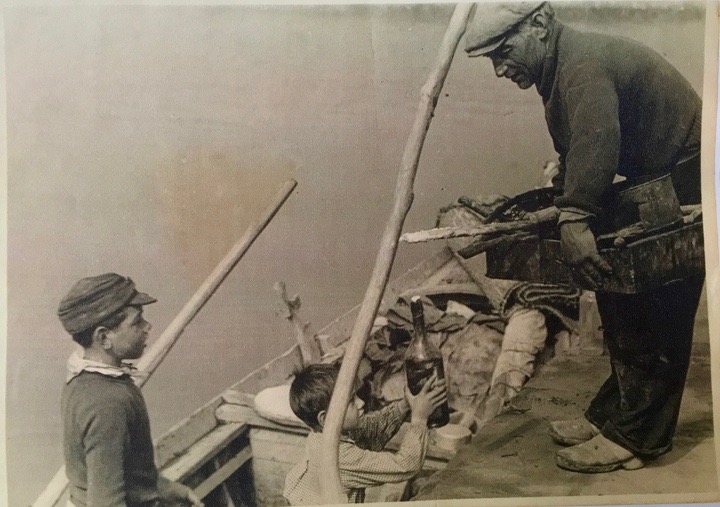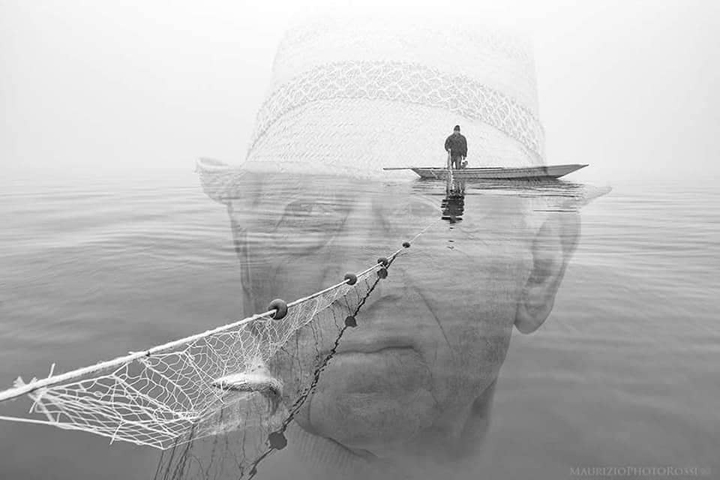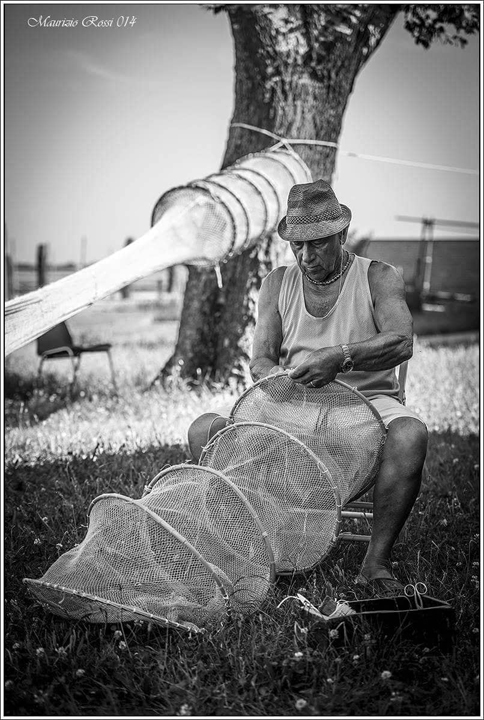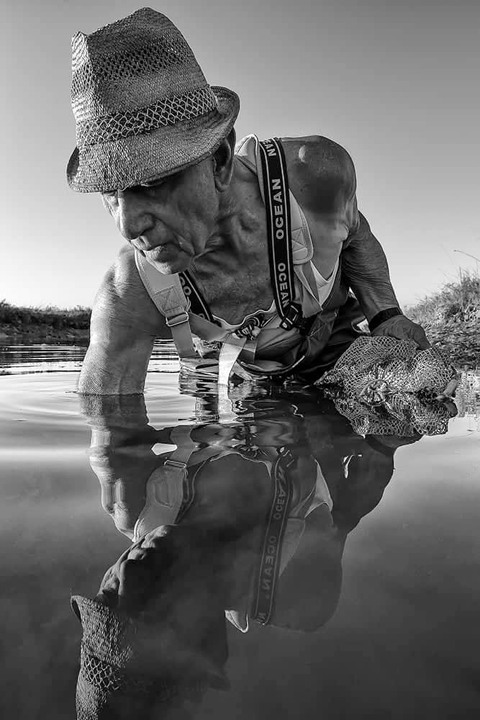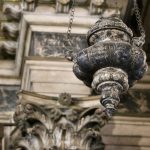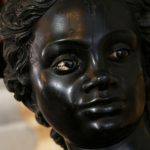Fishermen know the Venetian lagoon as no one else. This is the thought that struck my mind after meeting Giuseppe Rossi or, as everyone calls him, “Bepi Suste” from Burano.
Fishermen and the island of colours, Burano
Bepi Suste’s home is not too far from the busy centre of the island of Burano. It lies next to Bepi Suà’s house, famous for its multicoloured façade, and it is also painted, in a salmon pink color. But, as Suste told me immediately, houses in Burano were not painted in any colour. In fact, he remembers the crumbling bricks of those same walls when he played in the streets as a child. As long as Burano was one of the poorest islands in the Venetian lagoon, these fishermen’s little houses were very bare. No one could afford painting their house.
“How can tourist guides tell that fishermen painted their house in different colours in order to find it while they were out fishing and the fog enveloped the island?” and with sincere kindness and no resentment, he shows he’s sorry for those tourists and for his island, being described in such a misleading way.
A rowing champion from Burano
When I entered his home, I felt amazed. My attention was immediately attracted by lots and lots of trophies and colourful banners collected in a whole life spent participating at regattas. Suste received the career prize as a Venetian rowing champion and for having taught generations of young Venetians how to row in the lagoon… His son Maurizio, also an amazing champion and the author of the wonderful photos of this post, had told me about his father’s life, but I could not imagine anything like that.
And, guess what? While I felt overwhelmed by all these trophies, wondering how could one person only ever achieve so much, he showed me first the framed knots, the collection of Ottoman pipes or the remains of pots in ceramics he found in the lagoon. Or told me when he rowed a gondola along the Hudson River to remember firemen that died on 9/11.
Only then, as if he had showed me the important achievements in his life, he turned to the trophies and, smiling, he admitted that yes, all those were his banners… and not even all of them, as he gave some away… And then upstairs he showed me the gold medals. “It’s real gold”.
Becoming fishermen when still a child
A mixture of pride and humbleness, reliability and candor. He took a folder out of the bookshelf and showed me the photos you can see in this post. I loved this one:
On the left you can see Bepi Suste when he was likely 10 years old. His father is there and his brother, around 5 years old, holds the fresh water bottle. Polenta lies ready to be eaten on the boat. His father is wearing some shoes he had made. Some fabrics, a sole made of wood.
Life as a fisherman in the Venetian lagoon the ‘60s
He started going out fishing with his father after learning how to swim. As many others in Venice, Bepi Suste was also thrown in the lagoon water, with a rope tied around his waist so he would not drown, till he learnt. And then off to work. Just five or six years old, for two weeks in a row, living on the boat where they fished during the night hours. A blanket, the fishing net, the sail, the “caldiera” to cook, the “galosse” to wear on his feet. Fresh water and flour for the polenta. They slept under the sail, under a bridge, where they happened to be. On that “sandolo” boat, everything found its place. When it came to eating, they used one of the oars to hold the pot where they cooked a fish soup with eels, goby fish, cuttle fish and more.
For seventy years, I have discovered the lagoon
Fishermen’s techniques in the Venetian lagoon: local expertise
To catch the fish, he used a trammel-net. The technique is called “seragia” (cage, enclosed area) and consists in placing posts every meter, more or less, in the shallow water of the lagoon with a net in between. This forces fish, crabs and eels to get trapped in the “cogoli” (accordion-shaped nets), placed every 50 meters. The nets are to be placed so to catch the fish in both water directions, when the high tide comes in, when the low tide leaves the lagoon.
The fish needed then to be kept in the “nassa”, a fish trap, where the fish didn’t get stifled, to be carried to the market in Rialto.
Fishing diversification
Then, the season for “moeche” (small, green soft shell crabs) arrived. In boxes once made in wicker, crabs were kept to be checked in their growth. Only very experienced fishermen can tell from some details, when the crab is changing its shell and gets soft before becoming bigger and developing the new shell. That’s the right moment to take it out of the cage, otherwise the other crabs eat it. You need to take it out of the water within the next 24 hours so the new shell does not grow.
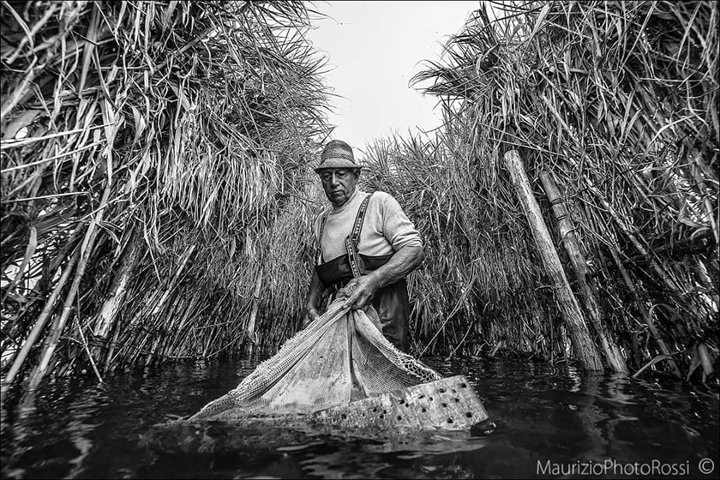
“Bepi Suste” pulling the wooden cage for the soft shell crabs, Burano – Venice, photo by ©Maurizio Rossi
And then clams, shrimps, goby fish, or the young sea bass, sea breams, mullets. Bepi Suste told me about all sorts of fishes, complaining about how nowadays cormorants are eating it all and some species have disappeared from the lagoon. That’s what made this man’s and his father’s generation special: they knew how to diversify their activity, not just sticking to one kind of seafood, like clams.
His father would never be satisfied with one area only, but would move around the whole lagoon, rowing from one place to the other. Yes, you got it, I wrote “rowing” in the “valesana” way: standing, face forward with one oar in each hand. When his father got his 4 HP motor, he would use it only when the weather turned bad to get back home, “se butta vento” (if the wind blows hard).
Fishing in a team: thirteen people, two caorline and one sandalo
Bepi Suste explained to me that fishermen would meet on Monday morning at the “osteria” (little inn and wine bar) to talk together, get everything ready and by 3pm three traditional Venetian boats were ready to leave: two “caorline” and one “sandalo” for a total of ten men and three boys. Before sunset, the boats had reached the fishing point spreading an over 200 meter long net in a circle, pushing the net with the oars, while the sandalo moved all around to check there were no problems. One of the “caorline” turned the lamp on and while the net was closing more and more the fish in a trap, the boys had to collect and select the fish on some boxes on the second caorlina, the larger one. And this would go on all night long…
In the pitch darkness of the night, the bell tower of St Mark’s square tolled midnight and later the constellations of the stars would tell them what time it was… till the “stellon dell’alba” (the big star of dawn) appeared.
When the dawn appeared, on the fast sandalo with three oars, some fishermen would then reach the Rialto market to get to the auction and sell the fish, get the money, receive a doughnut to calm hunger down and then back to the other fishermen to keep on like this for one or two more weeks.
This is a real story.
I left Burano thinking, how could guides ever tell these men needed colourful houses not to get lost in the lagoon…? Come on. We are the ones that need them not to turn this lagoon into a fake story.
by Luisella Romeo
registered tourist guide in Venice, Italy
www.seevenice.it






